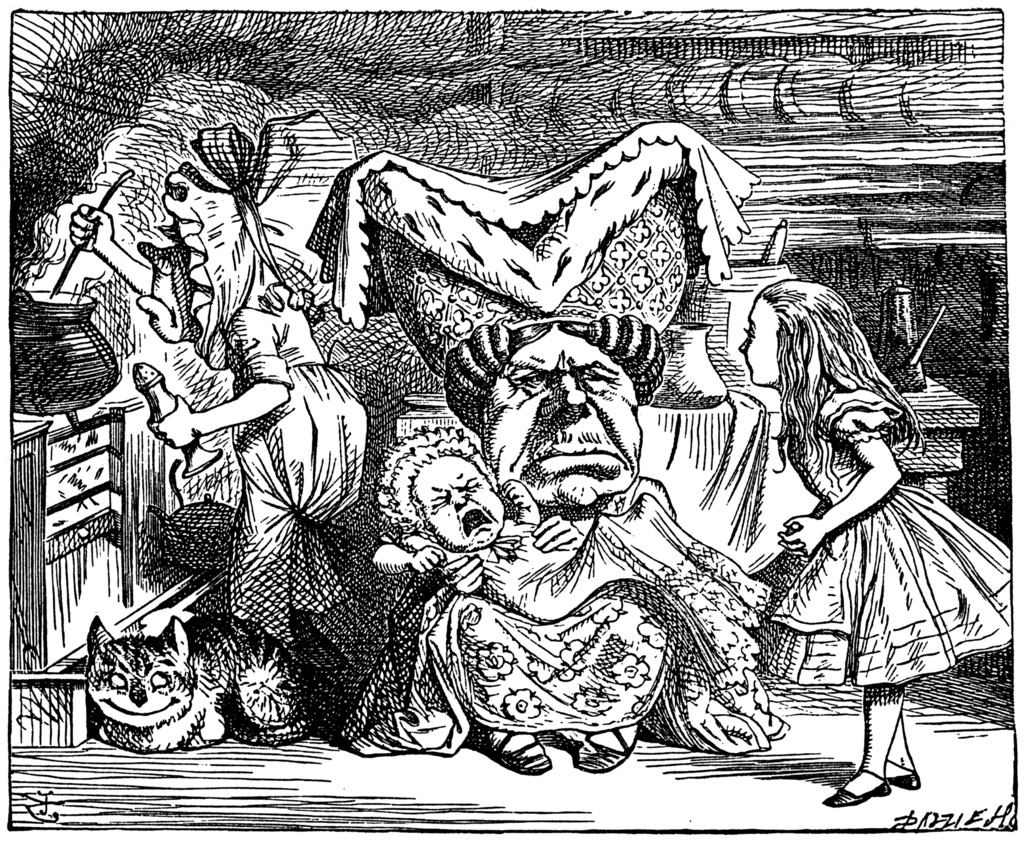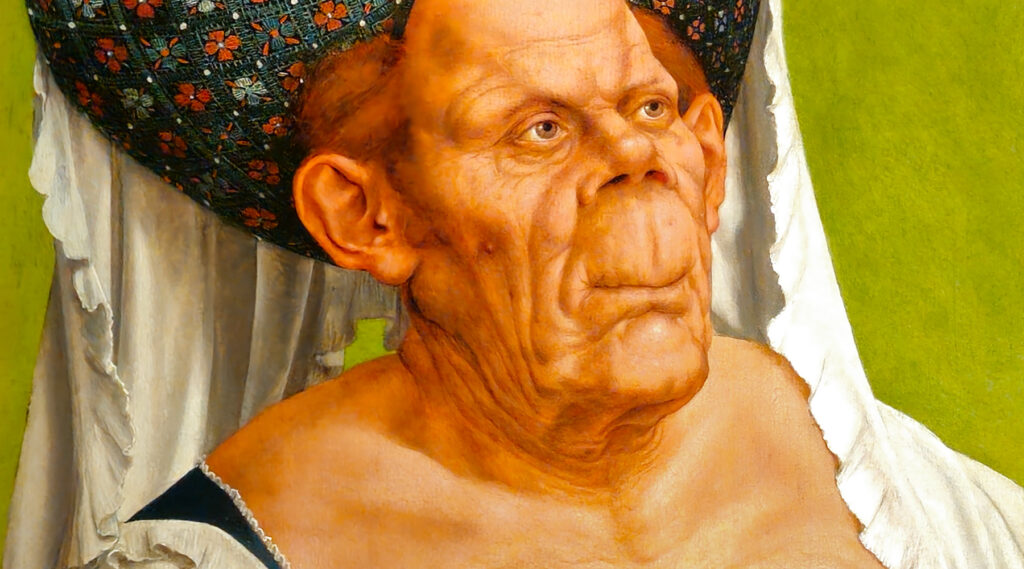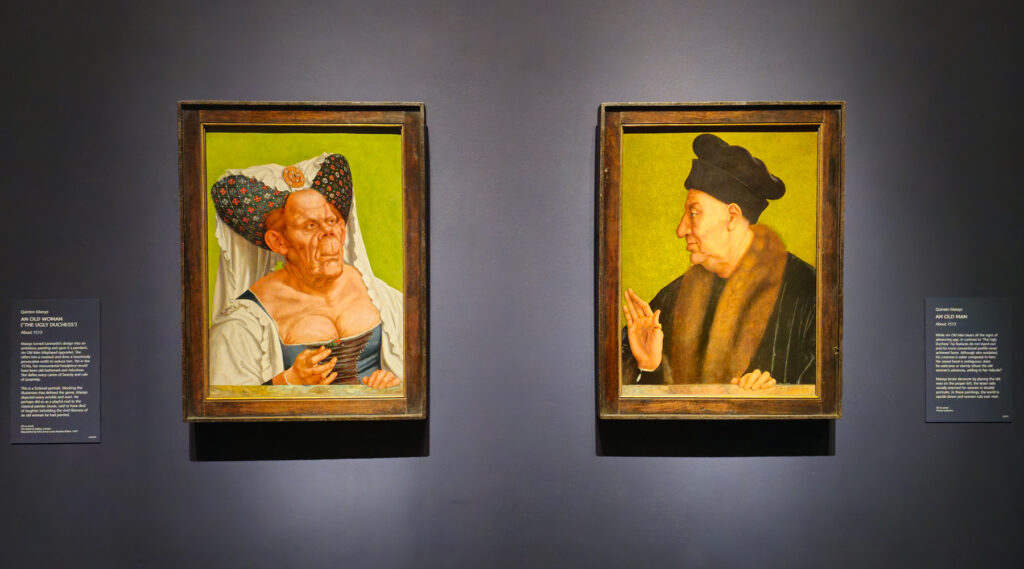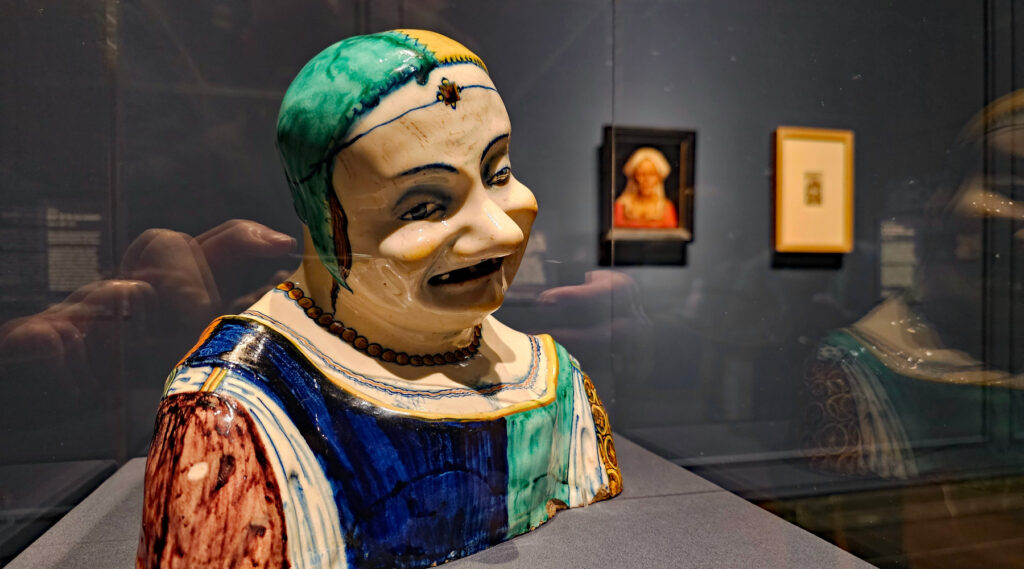A painting you are unlikely to have seen, and yet will somehow recognise instantly has just gone on display at the National Gallery — and this is An Old Woman by the painter, Quinten Massys.
It’s a lot better known as The Ugly Duchess.
The reason it may seem familiar is that she was the inspiration for the illustration of The Ugly Duchess in Lewis Carroll’s Alice’ Adventures in Wonderland when Alice encounters the Duchess and tries to avoid “first, because the Duchess was very ugly; and secondly, because she was exactly the right height to rest her chin upon Alice’s shoulder, and it was an uncomfortably sharp chin,”
When the book was published, its illustrator, the satirical draughtsman John Tenniel based the image of the Duchess on this painting of An Old Woman. In doing so, made the painting indirectly famous and gave it the painting’s famous nickname.
So famous that few people realise that The Ugly Duchess is not its official name.
She’s slightly less ugly now though, as the painting has been given recent conservation and cleaning, and has gone on display in a special exhibition that puts her along with the companion painting of an old man, which is now in a private collection, and what may have been the preparatory study for the painting.
Despite its unfortunate name, the painting is an important satire.
The painting dates from 1510s and shows an old woman clearly hankering for her lost youth. Her clothes, once the height of fashion in her youth would be dated at the time she was painted. She’s holding a small red flower, a traditional symbol of engagement, but it’s a closed bud, which is usually interpreted as a flower that never blossoms.
Sitting within all this decorative frumpery is the Old Woman herself.
There have been centuries of speculation about who she is, but it’s likely that she’s a composite or imagined figure, as there was already an existing tradition of drawing so-called grotesques and exaggerated facial features.
But this painting is no continuation, but a complete shake-up of the norms of the time in portraiture.
At the time, it was considered appropriate for couples painted together to have the man on the left and in front of his wife, who is shown slightly behind and to the right.
Massys reversed that, and this is because the Old Woman is presented on the left facing another painting, of the Old Man who is shown in profile on the right. It’s not well known that happened, as both paintings were split up centuries ago, and it’s rare for them to be reunited.
So this display by the National Gallery lets us see the Ugly Duchess as she was meant to be seen originally – not just a grotesque figure, but also one that challenged the painting conventions of the time.
Even the plump and exposed bosom of an aged woman was scandalous.
This is all the easier to understand as the gallery has placed the two suitors in a room alongside a number of other artworks that reveal the context in which the painting was made.
There are a number of sketches of grotesques, including one satire on aged lovers by Leonardo da Vinci, and two sketches that are very close in appearance to the Ugly Duchess herself.
What the exhibition looks at more thoughtfully though was how portraiture and drawings at the time generally looked down on ugly women, treating them as figures of fun to be mocked or feared. The very first representation of a “hag”, riding a witches broom, by Durer is here along with a ceramic of a harlequin woman with a downturned face often displayed in homes as a joke about old women.
Even the reversal is satirised, with the unequal couple shown as a young man courting an older richer woman — a story that was more famously repeated in Hogarth’s A Rake’s Progress.
The exhibition is both a rare chance to see the mislabeled Ugly Duchess in her original pose, opposite the Old Man, but also to see her in the context of the time she was painted some 500 years ago.
The exhibition, The Ugly Duchess Beauty and Satire in the Renaissance is at the National Gallery until 11th June 2023. It’s free to visit and can be found in Room 46, which is by the portico exit from the gallery.
There’s an accompanying book that is a study not just into the painting itself, but also into the wider tradition of grotesque paintings, of which the Ugly Duchess is just the most famous.










A bloke in drag? Possibly an actor? Back then all roles, both males and female, on stage were filled by men.
I am surprised that I can’t find a piercing in the ear.